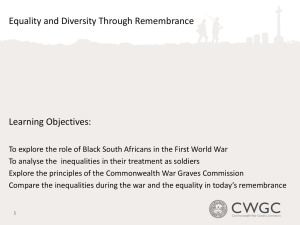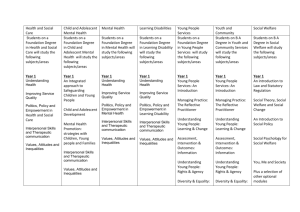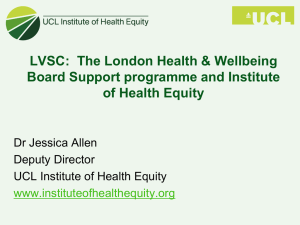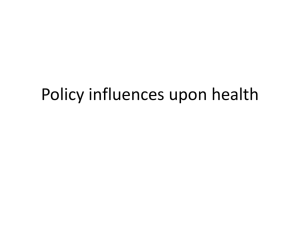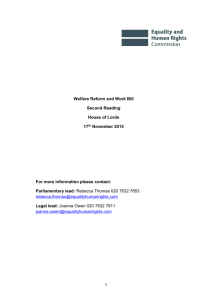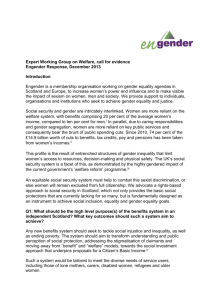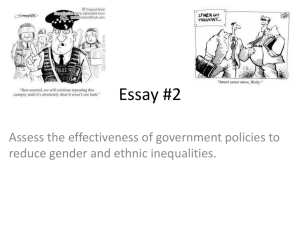Gender roles
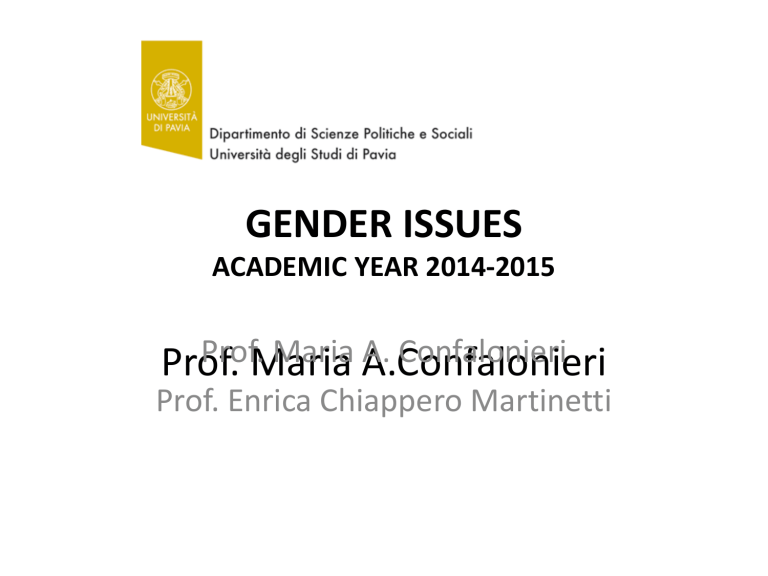
GENDER ISSUES
ACADEMIC YEAR 2014-2015
Prof. Maria A.Confalonieri
Prof. Enrica Chiappero Martinetti
Course’s aims and contents
Aims
• to provide the conceptual instruments to analyzing and evaluating the dimensions of gender inequality and to understanding , thanks to the comparative analysis of welfare states , the political strategies to promote gender equality .
• to discuss the linkage between gender equality and development issues in a globalized world
Characteristics
• Interdisciplinary (economic theory and political science/policy analysis)
• Comparative perspective: North (Europe and OECD countries) and
South (developing and emerging countries).
Two main modules + seminars
Module #1
Gender equality policies and welfare states development (10 lectures)
– three policy paradigms of gender equality policy
(equal treatment, equal opportunities and gender mainstreaming)
– the relation between welfare state regimes and
“gender regimes” , illustrating national cases
(mainly from the EU) and focusing on the case of
Italy .
Module #2
Gender and development (6 lectures)
• Gender inequalities and gender progress around the world
• Measuring gender inequalities
• The impact of globalization and development on gender (in)equality
Further info
Course readings
• readings will be provided during the course
Students’ assessment
• a 9-10 pages paper on a subject agreed with one of the teachers
Introduction to gender issues: the roots of the gender debate
• The Oxford Dictionary:the state of being male or female (typically used with reference to social and cultural differences rather than biological ones)
• Wilkipedia :The distinction between sex and gender distinguishes sex , the biological makeup of an individual's reproductive anatomy or secondary sex characteristics , from gender , an individual's lifestyle
(often culturally learned) or personal identification of one's own gender ( gender identity )
Gender is socially constructed
• Gender is used to describe those characteristics of women and men, which are socially constructed , while sex refers to those which are biologically determined. People are born female or male but learn to be girls and boys who grow into women and men. This learned behavior makes up gender identity and determines gender roles” (World Health
Organization, 2002, p. 4).
Gender as a dynamic concept
• Gender as a social practice not an individual’s characteristic (which wouldn’t move us far from biology)
• Thinking of gender as a social practice moves us away from the essentialism of biology towards a dynamic idea of gender , considering the agency role of individuals and collectivities.
• As a social practice gender is continually constructed and re-constructed by the activities of women and men and of institutions like family, church, school and the welfare state.
Gender as a relational concepts
• We may use “gender” as a shorthand but what we must have in mind are gender relations
Not biological dichotomies but norms and relations embedded in a certain society and culture.
Gender studies don’t intend to study women but rather compare males and females.
Gendered practices have consequences for the relationships, both public and private, between women and men.
The analysis is focused on differences while the access to resources is analyzed in terms of inequality.
Social construction of feminity is complementary to te social construction of masculinity
• “Constructing ideals of masculine behavior in any culture cannot be accomplished without constructing ideals of femininity that are supportive and complementary . “ (Enloe,
2004,107)
Constructing gender roles
• Social political religious institutions are the responsible for the construction of gender roles .
• C.Enole (
• Ex: nationalism and militarism: men as soldiers women as soldiers’ mothers and wives.
• Ex: constructing women’s labor as cheap labor
• Ex: redefining”the good daughter” in South
East Asia
Dimensions of gender relations (Daly,
Rake 1993)
• Gender relations are composite of three elements.
• -resources
• -social roles
• Power relations
Resources
• Resources refer to goods and capacities at one’s disposal, that are fundamental for status and well being.
• Regarding women, time and opportunities are crucial resources, as crucial as financial resources.
• Resources must come in the right combination : to take up a job a mother needs both a wage sufficient to make worthy to take up a paid job and somobody to take care of the child
Roles
• Gender roles are the expected attitudes and behaviors a society associates with each sex.
• A role is the expected behavior associated with a status. Roles are performed according to social norms, shared rules that guide people’s behavior in specific situations. Social norms determine the privileges and responsibilities a status possesses.
Females and males, mothers and fathers, and daughters and sons are all statuses with different normative role requirements attached to them. The traditional role of mother calls for expected roles involving love, nurturing,self-sacrifice, home-making, and availability.
The traditional role of father calls for expected roles of breadwinner, disciplinarian, home technology expert, and ultimate decision maker in the household.
The norms regarding gender roles prevailing in a society influence state’s policies and in particular social and labour market policies . The policies tend to both mirror and reinforce the prevailing definition of gender role
(gendered policy logic)
Gender roles and public policy
• Policies about housing, land ownership, population control, labour markets, etc. rest upon presumptions about masculinity and femininity .
• Conducting public policy research requires gender awareness because
• (1)any policy choice make distinction between women and men
• (2) most of the policies concerning men could not be rationalized without supporting arguments concerning women
Gender roles and public policy
• Ex. POSTWAR RECONSTRUCTION
• “critical junctures” in the development of
European welfare state and political system.
• How to cope with the competing claims of war veterans and women mobilized into work during the war ?
Power relations
• Are closely associated with roles.
• Most obvious They influence how public policy is shaped and who benefits from distributive and redistributive decisions.
( resources).
• Reducing gender inequalities implies changing gender power relations
Gender inequalities
• We will compare differences in
• Resources
• Roles
• Power between women and men and discuss how public policies and development policies impact on these differences
